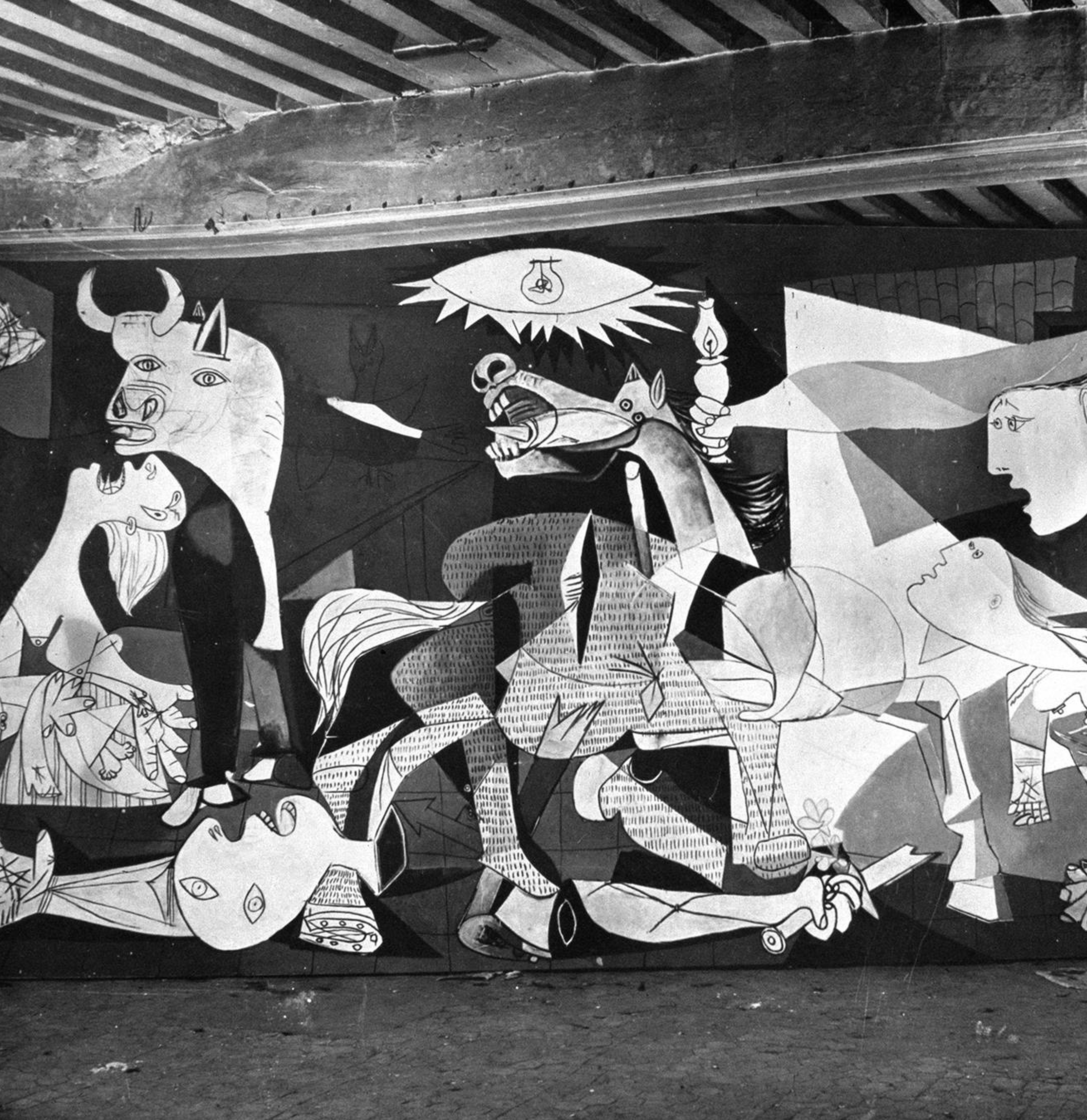Analysis of Guernica by Pablo Picasso
Historical Context
Created in 1937, Guernica is a monumental response to the horrors of war, specifically the bombing of the Basque town of Guernica during the Spanish Civil War. Commissioned for the Spanish Pavilion at the Paris World’s Fair, the painting reflects a turbulent era marked by the rise of fascism, international conflicts, and human suffering. Pablo Picasso, deeply affected by these events, channelled his outrage into this masterpiece, using it as a poignant political statement and a testament to the resilience of humanity.
Techniques Utilised
Guernica employs a monochromatic palette of black, white, and grey, enhancing its stark emotional impact. Picasso uses geometric abstraction and fragmented perspectives to depict a chaotic and disjointed scene. Figures are distorted, their forms fractured into sharp, angular shapes, conveying a sense of anguish and disarray. The absence of colour underscores the tragedy, resembling the bleakness of a photographic record of war. The massive scale of the painting also immerses viewers in its raw emotional power.
Impact on Cubism and the Broader Art World
Guernica stands as one of the most significant works of the 20th century, transcending its cubist origins to become a universal symbol of anti-war sentiment. While rooted in cubist principles, it expands the movement’s scope by incorporating elements of surrealism and symbolism. The painting inspired countless artists and movements, highlighting art’s potential as a medium for political and social critique. Its enduring relevance speaks to Picasso’s ability to capture the collective psyche during a period of immense turmoil.
Interpretation and Meaning
The composition is laden with symbolic imagery, each element contributing to its harrowing narrative. The bull represents brutality and darkness, while the horse, pierced and anguished, symbolises suffering. Fragmented figures of women and children evoke themes of loss and grief. The broken sword at the bottom, juxtaposed with a budding flower, hints at the possibility of renewal amidst destruction. This intricate interplay of symbols invites diverse interpretations, solidifying Guernica as a timeless commentary on the human condition.
Connection with the Artist
Guernica reflects Picasso’s evolution as both an artist and a socially conscious individual. Known for his innovation in Les Demoiselles d’Avignon, he pushed cubism further, integrating it with a deeply personal and political narrative. The painting exemplifies Picasso’s ability to adapt his artistic vision to address contemporary issues, merging technical brilliance with profound emotional depth.
Conclusion and Reflection
Guernica remains a seminal work in the history of art, embodying the resilience of humanity in the face of unspeakable violence. Its universal themes and bold aesthetic continue to resonate, reminding us of art’s capacity to inspire reflection and change. Through this masterpiece, Pablo Picasso demonstrated the power of creativity to confront darkness and advocate for peace.
